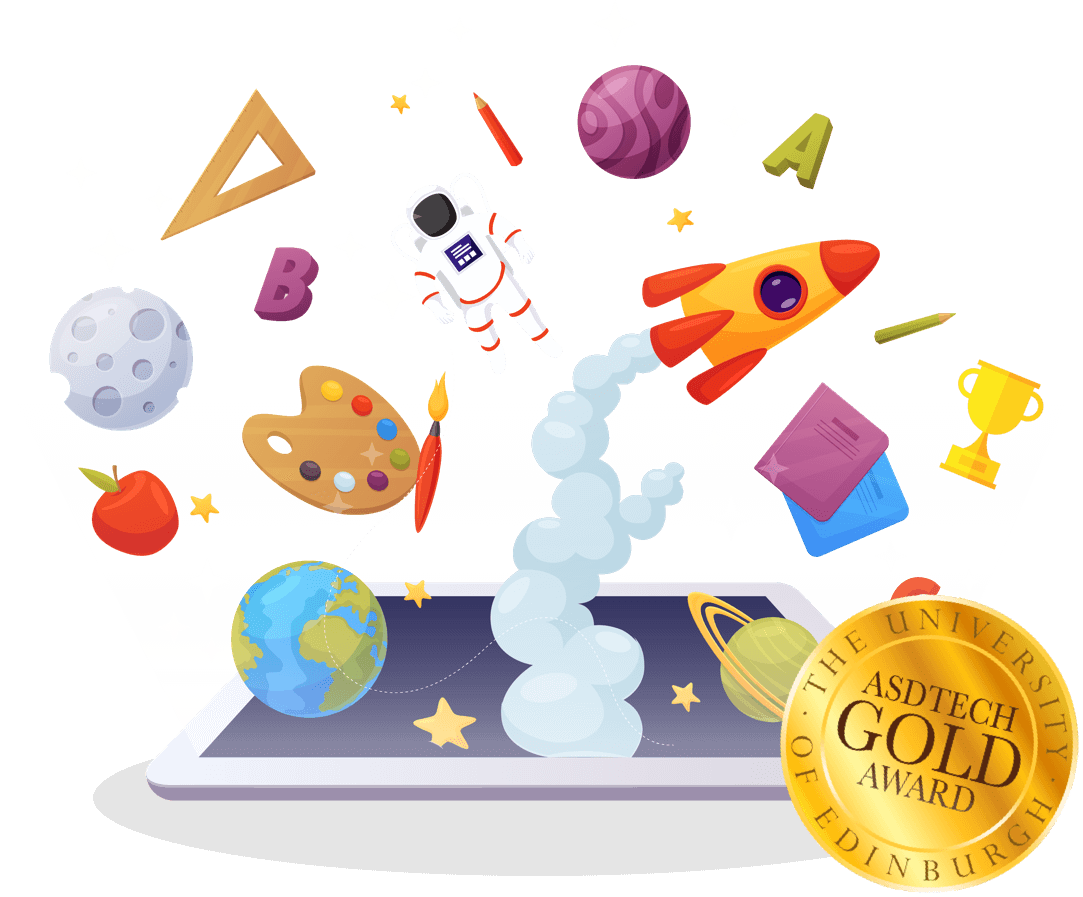This blog is a quick summary of all the basic information one should know about autism. Mentioning difference of autism at different ages, it includes general classifications of ASD symptoms, the rights and wrongs that people know about autism, its 3 most known types and important treatments, specifying importance of technology on children with autism.
1. What is Autism Spectrum Disorder?
Autism Spectrum Disorder (ASD) refers to a wide range of similar disorders that affect a person’s social interaction, communication, and behavior. ASD is a spectrum disorder because there is variation in the symptoms and their severity among individuals. Children and adults with autism will not share universal symptoms; each person presents a unique combination of indications. There are three general classifications of ASD symptoms—problems with social interaction, problems with communication, and exhibiting limited recurring behavior. A diagnosis of autism is generally accepted if a child shows symptoms in at least two of these three areas.
Social Interaction in Autism
In general, children with autism will struggle with social interactions. Possible indicators include:
- A lack of interest in their peers
- Difficulty understanding or relating to their peers
- Unable to express emotion, especially around their peers
- Struggling to understand or predict other people’s actions
- Struggling to keep a conversation going
- Avoiding eye contact or looking at a person using peripheral vision
Communication in Autism
Communication is a common struggle for children with autism. Along with delays in speech and language development, indicators of communication difficulties include:
- Unresponsiveness to verbal prompts
- Speaking in a flat voice or using an unusual cadence
- Struggling to understand nonverbal communication like facial expressions, gestures, and body language
- Taking things literally; not understanding jokes, expressions, or idioms
- Struggling with imaginative thinking or pretend play
Limited Recurring Behavior
Another term for repetitiveness, limited recurring behavior can manifest in many areas of a child’s life, not just in communication. Common signs of this behavior are:
- Being hyper-focused on specific topics, tasks, or objects
- Talking excessively and endlessly about a particular interest, often not allowing anyone else to speak
- Following a routine and becoming upset if there is any disruption in this routine
- Repeating a certain motion or behavior, like opening and closing a door or saying specific words or phrases over and over
- Exhibiting hyper- or hypo-sensitivity to sensory input

2. Myths and Facts about Autism
There are many misconceptions about autism spectrum disorder (ASD). Debunking the most common myths about autism helps to educate others and spread awareness about the facts.
One of the widespread myths about autism is that it is a disease and therefore subject to the origin and routes of transmission theories that characterize most diseases. In fact, ASD is a neurodevelopmental disorder with a strong genetic component. It cannot be cured with medications or special diets (although these can help control some of the symptoms). By extension, autism is not a “recent trend” and is not a consequence of bad parenting or a reaction to vaccines. Because autism can affect a person’s whole body, affected children and adults experience higher rates of sleep disorders, ADHD, anxiety, depression, and gastrointestinal issues.
Although autism cannot be “cured,” there are numerous therapies and assistive technologies that greatly improve the lives of individuals with ASD. Early intervention, for example, helps promote lifelong social skills, self-care, and communication. Cognitive behavior therapy (CBT) and Applied behavior analysis (ABA) are two intervention options that have shown to be successful in correcting negative behaviors. Computers, tablets, and smartphones have created fertile ground for autism games, toys, and skill development software.
Learning the facts about autism is the first step toward improving the prognosis for individuals with ASD. Because the disorder carries over into all areas of life, people with autism are more likely to face academic, social, employment, and financial difficulties. Autism affects people from all walks of life and from all ethnic and socioeconomic backgrounds.
3. What are the Most Known 3 Types of Autism
Asperger’s Syndrome
Asperger’s syndrome is commonly considered to be on the ‘milder’ side of the autism spectrum. Children with Asperger’s tend to be diagnosed later than children with other types of autism. While people with Asperger’s often have normal intelligence and language development, they may find navigating social interactions to be extremely difficult. Some common indications of Asperger’s syndrome include misreading or not understanding nonverbal communication, such as facial expressions, body language, and gestures. Children with this type of autism may be hyper-sensitive to stimuli or sensory input. They may also have limited but hyper-focused interests about which they can talk freely and almost excessively.
Pervasive Developmental Disorder, Not Otherwise Specified (PDD-NOS)
This wide-wide-ranging type, also known as atypical autism, generally refers to those individuals who fall in between Asperger’s and autistic disorder in terms of the severity of their symptoms. The first sign of atypical autism may be early delays in movement or talking, which then lead to broader delays and difficulties in communication and social development later on.
Autistic Disorder
Children with autistic disorder will have heightened symptoms and difficulties in communication and social interactions. Children with all ranges of intelligence (below-average, average, and above-average) are affected by autistic disorder. Autistic disorder is characterized by significant difficulties or inabilities to communicate, which present in little-to-no eye contact, not responding to verbal prompts or to their name, a flat pitch while speaking, maintaining a strict routine, and having recurring behaviors. Fixation is another characteristic whereby a child becomes hyper-focused on a specific thing. In addition, there is a heightened intolerance of sensory input.

4. Autism at Different Ages
Autism spectrum disorder has a strong hereditary component, which means that sometimes symptoms can be detected in babies and toddlers. While many of the ASD symptoms will not appear until toddler-age, there are a few early indicators to look out for in babies. Specifically, a comparative approach will be the most useful in assessing a child with a potential ASD diagnosis; that is, by observing when a child achieves his or her development milestones and taking note of any substantial delays in relation to her peers. With that in mind, specific signs to watch out for will depend on the child’s age.
Autism in Babies, 0-12 months
Symptoms of autism in babies include a lack of interest in faces or facial expressions, little-to-no eye contact, not smiling or mimicking, sporadically responding to sounds or verbal prompts, and appearing unfazed by sudden, loud noises. She may dislike cuddling or become upset when hugged. Parents may also note that their child is generally uncommunicative, made most apparent by showing a disinterest in babbling or early, “baby” talk.
Autism in Toddlers, 12-24 months
Autism in toddlers aged 12-24 months will continue to reveal similar symptoms as in babies, but the degree may be stronger. Speech and language development accelerates during this time, making communication delays more recognizable. On the other hand, another indicator of autism at this age is if a child loses any previously-learned verbal or social skills. She may also show unresponsiveness to facial expressions or gestures like waving or shaking her head. The child may appear “disinterested” in the world around her.
Older Age, Preschool to Young Adult
Asperger’s syndrome, a type of autism, commonly appears in young children, from age 5. Children with Asperger’s may have average to above-average intelligence and strong verbal skills, which is why it can be difficult to notice any indicators. Children and adults with Asperger’s will primarily struggle with social interactions. Common signs to look out for include: being extremely introverted; cannot keep a conversation flowing; likes routine, has difficulty reading facial expressions or body language; has trouble understanding jokes or idioms; may have one or a few interests and will hyper-focus on them.
Autism in Adults
The symptoms of autism in adults can negatively affect how an individual manages to work and interact with coworkers and friends. At work, adults with autism may find hard to maintain eye contact with their superiors, may become flustered if something routine (the layout of a room or a schedule) changes, or find that they cannot speak to or relate to their coworkers. Like in children, autism in adults produces a wide variety of symptoms, all of which have the potential to cause frustration, anxiety, or depression.
Come along with 200k+ families!
Explore the endless possibilities of learning!
Download for Free.
5. Treatments for Autism
There are various types of well know autism treatments. This includes cognitive Behavioral Therapy, Ocuupational Therapy, Social Skills Training etc.
Cognitive Behavioral Therapy
Cognitive behavioral therapy (CBT) is a type of therapy that aims to help individuals understand the connections between feelings, thoughts, and behavior. By following these connections, these individuals are better able to pinpoint what feelings or thoughts act as triggers for negative behavior and to learn mechanisms for coping and for changing their behavior.
Occupational Therapy
Occupational therapy focuses on improving a person’s day-to-day skills which are necessary for living a healthy life and successfully navigating society. For a child with autism, this type of treatment may improve his fine motor skills and teach him how to perform daily tasks like getting dressed, brushing his teeth, and eating.
Social Skills Training
Social skills training (SST) helps children with autism to learn and develop their social skills. Children with ASD often struggle with social interaction. SST teaches them how to read nonverbal language, keep a conversation going, understand jokes or expressions, and to read emotions.
Medical Treatment
There is no medical cure for ASD but many of the signs of autism can exacerbate an underlying mental illness. Children with autism are more likely than their peers to experience anxiety, panic attacks, depression, and ADHD. A psychiatric and medical assessment of these symptoms can go a long way in helping a person with autism improve her quality of life.
Early Intervention
Early intervention for children with autism will likely combine one or more of the common treatments listed above. As for nearly all things health-related, early intervention is key to recognizing and stopping negative symptoms and fostering healthy thoughts and behaviors. Autism often affects children from a very young age, making early intervention all the more crucial.
Applied Behavior Analysis
Applied Behavior Analysis (ABA) is a form of therapy that seeks to teach positive behaviors and to change negative behaviors through observation and correction in a natural environment. For children with autism, this involves a therapist working with them long-term and devising a structured plan to teach skills like play, communication, and self-care. ABA in autism works by breaking skills down into smaller components and working with each component through repetition and encouragement.

6. Technology as a Treatment for Autism
Technology casts a wide net when it comes to potential therapies for autism spectrum disorder. Assistive technology refers to a device that helps an individual function better. Nowadays, commonplace devices like smartphones and tablets have paved the way for interactive games, toys, and apps that cater to children with autism.
There are many benefits from digital games and software. These tools offer a “safe space” to develop and practice skill sets and imaginative play. Otsimo, being one of them, serves the families with children with autism a safe atmosphere without any advertisements. Otsimo games educate and entertain your child, keeping their motivation and eagerness to learn. It’s known that collaborative software may improve spontaneous communication and peer-to-peer interactions. Both games and toys that cater to the needs of children with autism encourage problem-solving skills, motivation, concentration.
These devices, software, and toys also help with communication. For children who struggle with speech, mobile devices offer easy access for typing and can be equipped with text-to-speech (TTS) technology. Research also suggests that having a tablet or smartphone on-hand gives children with autism a familiar “out” in stressful scenarios. For example, a child can play a game or watch a video as a distraction from temper tantrums or mood swings.
Sources:
- Autism Facts and Figures:
https://www.autismspeaks.org/autism-facts-and-figures
- What Causes Autism:
https://www.nhs.uk/conditions/autism/
- Autism Spectrum Disorder:
https://www.nimh.nih.gov/health/topics/autism-spectrum-disorders-asd/index.shtml
- Types of Autism:
http://www.newkidscenter.com/Types-of-Autism.html
- Early Signs of Autism:
https://www.babycenter.com/0_early-signs-of-autism_10396941.bc#articlesection1
- What is Asperger Syndrome:
https://www.autismspeaks.org/what-asperger-syndrome
- Autism Symptoms:
https://www.healthline.com/health/autism-treatment#takeaway
- Technology and Autism:
https://www.linkedin.com/pulse/impact-technology-autism-kids-celine-rosalina-herry/





